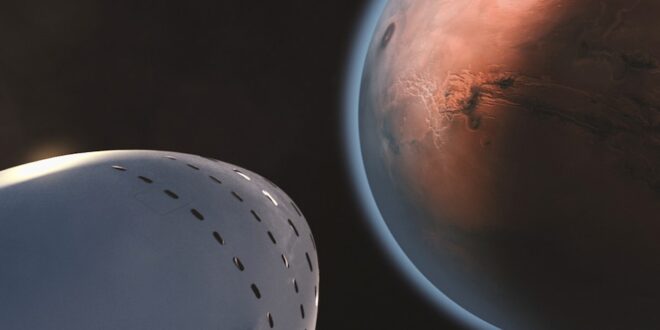What is the Human Population on the Mars? This might seem strange and farfetched, but much research and funding is going into making this a reality.
Companies like NASA and SpaceX dedicate large teams to solving this puzzle, but how is it going?
We shall explore the Mars programs to see how many people have gone to Mars and the prospects for the human race there.
Mars is one of the most studied planets in our solar system, so let us take a peek in the telescope and find out why;
What Is The Human Population On The Mars?
There is currently no human on Mars though many researchers are going into sending a human being there. Mars has been a complex planet to travel to, and both NASA and SpaceX crashed several probes before finally managing to land.
Its rough terrain and atmosphere mean we still need years of research to create a spacecraft that can carry humans there without risking their lives.
How Would Life On Mars Be Like?
The conversation about getting humans to Mars is common, and some people have even discussed what it would take for humans to colonize Venus.
Recent patterns suggest that some people might get a one-way ticket to Mars in the next few decades.
Mars One seemed to be one of the best choices for human colonization of Mas, but the company went bankrupt in 2019.
This created a concern where most people thought the dream had died, but research has continued, and the journey is closer than ever.
So what is the best way for humans to live safely on Mars? Three basic needs must be sorted out before humans go to Mars: habitat, eating, and breathing. So how will astronauts do this on Mars?
1. Habitat
Mars has no habitable structure, so astronauts must carry their habitation to Mars. The plan is to send missions with rovers and supplies, such as living units that robots will create in preparation for the first astronauts.
The first small crew will then get additional supplies from the staging ground in Space. They will use these supplies to build a more complex habitat for the second crew, which will most likely be more significant. This pattern will continue for all subsequent missions till there is a functional colony.
In the beginning, each astronaut will have about 10 m2 of living space, but there will be common spaces like kitchens and dining halls for socialization. They won’t be luxury apartments but will improve with time and resources.
2. Food
Once the astronauts are settled into their new homes, what will they eat? The best option would be to have special greenhouse sections attached to the habitats. These sections will have edible plants for the colonists to harvest.
The special chambers will need artificial light, Carbon dioxide, nutrients, and water for the plants to grow.
The Martian atmosphere is thin but mostly Carbon Dioxide, which is a good sign that we can use the air there to stimulate plant growth.
Scientists believe Mars’ soil might have the proper nutrients for plants to grow if humans supplement it with fertilizers and wash out the toxins.
3. Water
Mars is a desert planet, and it seems like finding water there would be a massive challenge. Luckily, this might be the most manageable problem to solve on the journey to Mars since research suggests water underneath the planet’s surface.
They will use probes to confirm the presence of water, extract some of it, can use it to plant a few crops. This will give the astronauts something to harvest before they can plant their crops. Waste management as the colony grows is still an ongoing discussion.
4. Breathing
It would be impossible to colonize Mars if humans can’t survive outside space suits on the red planet. Where would the breathable air come from? The habitat will be pressurized and have Earth’s atmosphere so people can stay inside without spacesuits.
Mars has a thin atmosphere with only about 0.13% oxygen, compared to Earth’s 21%. The plants will produce oxygen as they photosynthesize, but it will take time to sustain life.
The most feasible choice is to split the carbon and oxygen in the carbon dioxide in the atmosphere to extract oxygen. There are numerous complexities to it, but scientists believe it is achievable.
Why Are Researchers So Focused On Studying Mars?
All the research on Mars over the last century has taught us that Mars is a planet that was formerly capable of harboring ecosystems. Researchers believe it could still have some microbial life forms today, adding to the planet’s mystique.
Mars is the 4th planet from the sun coming after Earth but is smaller, about half the size of Earth. Mars is further away from the sun, so it takes longer to go around it in complete orbit. The rotation of Mars, however, is nearly similar to Earth’s in speed.
Because of this, a year on Mars lasts 687 Earth days, although a day on Mars is only 40 minutes longer than on Earth. Mars might be smaller than Earth, but its land area is almost the same as the total size of the continents without oceans and seas.
This means we would have roughly the same amount of living space on Mars as Earth. Despite these similarities, Mars has features that make it incapable of hosting any earthly organisms.
Despite its smaller size, Mars’ land area is nearly similar to the surface area of Earth’s continents, implying that Mars has the same amount of habitable real estate as Earth.
Unfortunately, There is Methane gas in the atmosphere of the red planet, and the soul has deadly substances to life as we know it.
Although water exists on Mars, it is trapped in its freezing polar caps and buried under the Martian surface, maybe in plenty.
Close examination of the Martian Landscape shows structures undoubtedly formed by flowing liquids. Rivers, lakes, deltas, and basins on Mars imply the planet formerly had topography much like Earth.
There is a high chance that the planet had a dense atmosphere that could sustain the liquid water at Martian pressure and temperatures. Mars is an excellent way for scientists to study how drastic changes in the climate can affect a planet and life on it.
The research also helps researchers discover possible signs of life on that planet’s earlier days and the possibility of them still existing. The data we collect on the red planet can help humans better plan their transition into making it a permanent home.
Mars was once a paradise like Earth before it underwent a drastic transition. The biggest question remains, what happened, and what was the cause? The solution to this mystery will most likely be a cautionary tale for humans and their treatment of Earth.
NASA’s Plans To Take Astronauts To Mars
The farthest humans have gone into Space is the moon, but NASA is intent on pushing the boundaries of this and putting a man on Mars. This ambitious plan will require a lot of resources and brain power, so how do they plan to pull it off?
Undertaking this journey will require a concentration of effort and technology like robotic probes to collect data on Mars. Additionally, we will need new ways of keeping astronauts safely in orbit for extended times and powerful spaceships to make the journey.
The journey to Mars has already begun, and NASA is taking steps to make this dream a reality. Astronauts in the ISS are learning more about living and working in Space for long periods.
The data they collect will be crucial for the long journey to Mars and its existence in the confined habitats. American Commercial cargo partners will transport people and resources to and from the space station.
NASA will use the Orion Crew Vehicle and powerful rocket systems to move to a staging ground in Space. This will be around or beyond the moon, giving them easier access to Earth and Mars.
To reach Mars, they will use this station to test new technologies, like propulsion systems and habitats. Robotic probes are already exploring Mars, allowing astronauts to land.
Once researchers develop the best technology for traveling to and inhabiting Mars, humans can create a colony independent of Earth. The staging area will be responsible for the initial terraforming and safe habitat construction before humans make that final journey.
Conclusion
For those pondering the question “What is the human population on Mars?” you now know it is still only in theory. Mars is a distant and harsh world, and there is still a lot of research necessary to develop the technology to make Mars habitable for humans.
Given the size of the task, it will need international collaboration among governments, space agencies, and private entities. Mars looks like the planet that will become humanity’s next home, so as always, humans reach for the stars.
 Being Human
Being Human




